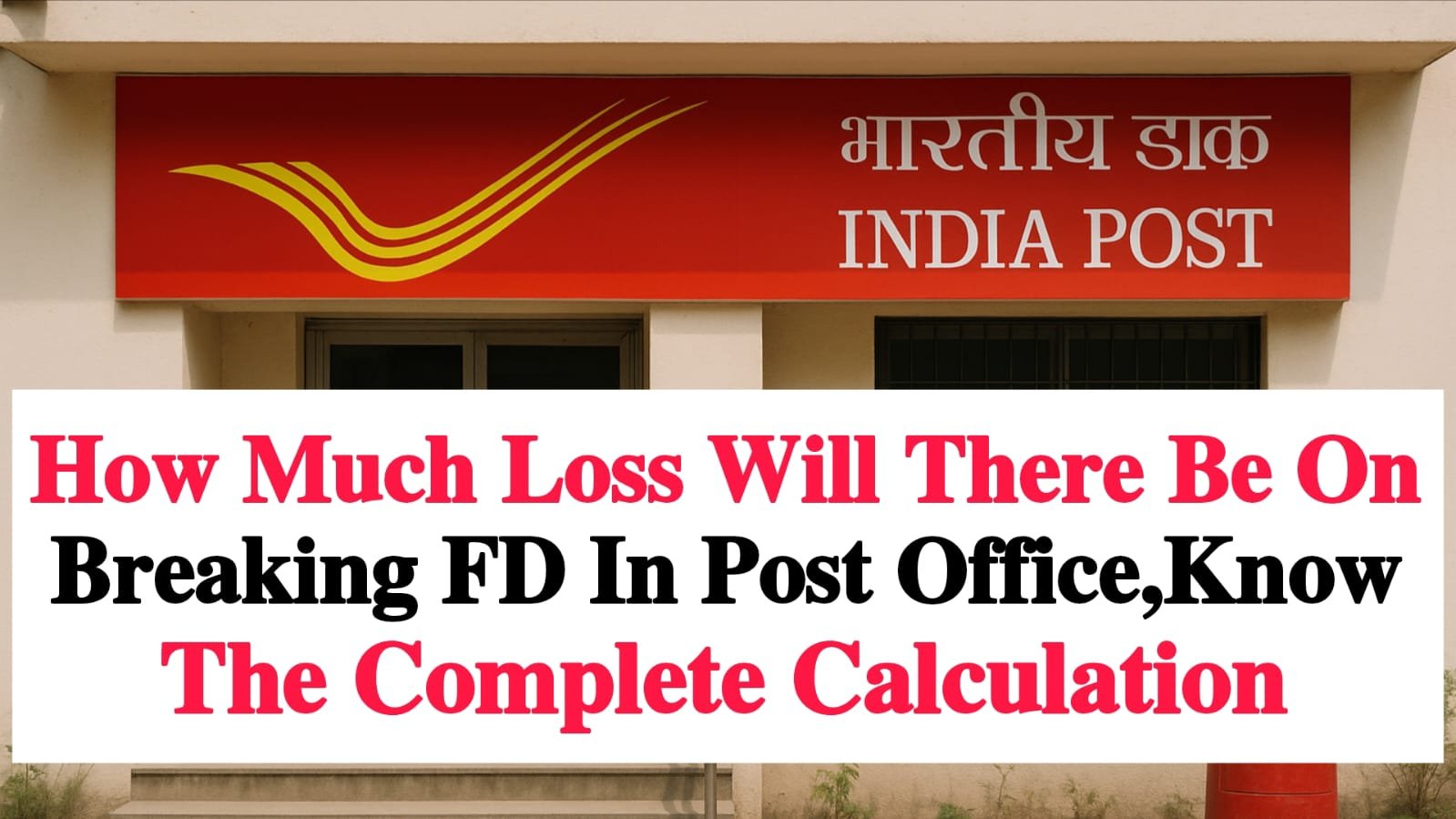Post Office FD Rules : Just like banks, the Indian Post Office also offers Fixed Deposit (FD) schemes, officially known as Time Deposit (TD) Accounts. These are reliable investment options for individuals looking for a secure and guaranteed return on their savings. Post Office FDs come with lock-in periods of 1 year, 2 years, 3 years, and 5 years, each offering different interest rates and terms of withdrawal.
However, while these FDs are considered safe and stable, investors must be cautious about the consequences of premature closure. If you break an FD before maturity, you might not only lose a portion of the interest but also face penalty charges. Moreover, in the case of 5-year FDs—especially those availed for tax-saving benefits under Section 80C of the Income Tax Act—premature withdrawal can lead to loss of tax deductions, resulting in additional tax liability.
Let’s explore in detail the rules, penalties, and tax-related consequences of prematurely closing a Post Office Fixed Deposit.
Post Office FD Rules : Minimum Lock-in Period: No Withdrawal Before 6 Months
If you have invested in a Time Deposit (TD) account at the Post Office, you cannot withdraw the money before completing 6 months from the date of deposit. This is the minimum lock-in period across all FD tenures. Any attempt to close the FD before this period will be rejected, and the investor will be required to wait until at least six months have passed.
Post Office FD Rules : Premature Closure After 6 Months But Before 1 Year
If you have invested in a 1-year, 2-year, or 3-year Time Deposit, and wish to close the account after 6 months but before completing 1 year, the interest calculation changes significantly. In such cases, the interest earned is not based on the original FD interest rate promised at the time of opening the account.
Instead, the Post Office will pay interest equivalent to the Savings Account interest rate, which is typically lower (e.g., around 4% per annum, though the rate may vary depending on current policies). This means a clear loss of interest earnings, as FD interest rates are generally higher than the savings account rate.
Post Office FD Rules : Premature Closure After 1 Year – For 2-year or 3-year FDs
For investors who have opted for a 2-year or 3-year FD, and decide to close the account after 1 year but before the full tenure is completed, the penalty structure is more specific.
In such cases, the interest will be recalculated at the applicable FD rate for the actual completed duration, but with a 2% penalty. This means that if your FD has completed 1 year and 8 months (out of a 3-year term), then interest will be paid as per the 1-year TD interest rate minus 2% penalty for the first full year. For the remaining 8 months, only savings account interest rate will be paid.
This step-down in interest rate can result in a substantial reduction in the overall returns from the FD.
Post Office FD Rules : 5-Year FD – Strict Lock-in and Tax Implications
If you have invested in a 5-year Time Deposit, especially for the purpose of tax savings under Section 80C, you must be aware of stricter withdrawal rules. Such FDs have a mandatory lock-in period of at least 4 years. Premature closure is not allowed within the first 4 years under any circumstance.
If you withdraw the FD after 4 years but before the completion of 5 years, the interest payable will be significantly lower. In such cases, the Post Office will not provide the original contracted FD interest, but instead, you will receive interest equivalent to the savings account rate only. This could be a major loss, especially since the 5-year TD generally offers the highest interest among all Post Office TD tenures.
Post Office FD Rules : Loss of Tax Benefits on Premature Withdrawal
The most important financial implication of premature withdrawal from a 5-year Tax-Saving FD is the loss of tax benefits.
Under Section 80C of the Income Tax Act, investors can claim a deduction of up to ₹1.5 lakh by investing in eligible tax-saving instruments, including the 5-year Post Office FD. However, if this FD is broken before maturity (i.e., before completing 5 years), the deduction claimed in earlier years becomes null and void.
Here’s how it works :
Let’s say you invested ₹1.5 lakh in a Post Office 5-year FD in the financial year 2024–25 and claimed a deduction under Section 80C for the same. This helped reduce your taxable income and save on income tax that year. However, in the financial year 2025–26, you decide to prematurely close the FD due to an urgent need for funds.
In this case, the tax benefit claimed in 2024–25 will be reversed, and the previously exempted ₹1.5 lakh will now be added to your income in FY 2025–26. You will be taxed on this amount as per your applicable income tax slab rate, which could be as high as 30% for high-income earners.
In other words, not only do you lose out on interest income due to lower rates and penalties, but you may also end up paying extra income tax, effectively nullifying the purpose of the tax-saving investment.
Conclusion : Plan Before You Break a Post Office FD
While Post Office Fixed Deposits are a safe and government-backed investment option, investors must carefully assess the implications of premature withdrawal. Breaking an FD before maturity can lead to:
-
Loss of interest income
-
Reduction of 2% in applicable interest rate (for FDs closed after 1 year)
-
Interest downgrade to savings account rate (if closed between 6 months and 1 year, or in certain other cases)
-
No withdrawal allowed before 6 months
-
Loss of tax deduction under Section 80C for 5-year FDs
-
Tax liability due to reversal of deductions claimed in earlier years
To avoid these financial setbacks, it’s important to plan your investments wisely and only invest in long-term FDs if you’re reasonably sure you won’t need the funds before maturity. If there’s even a small chance you might need to withdraw early, consider choosing a shorter tenure or maintaining emergency funds separately to avoid such penalties and tax issues.



